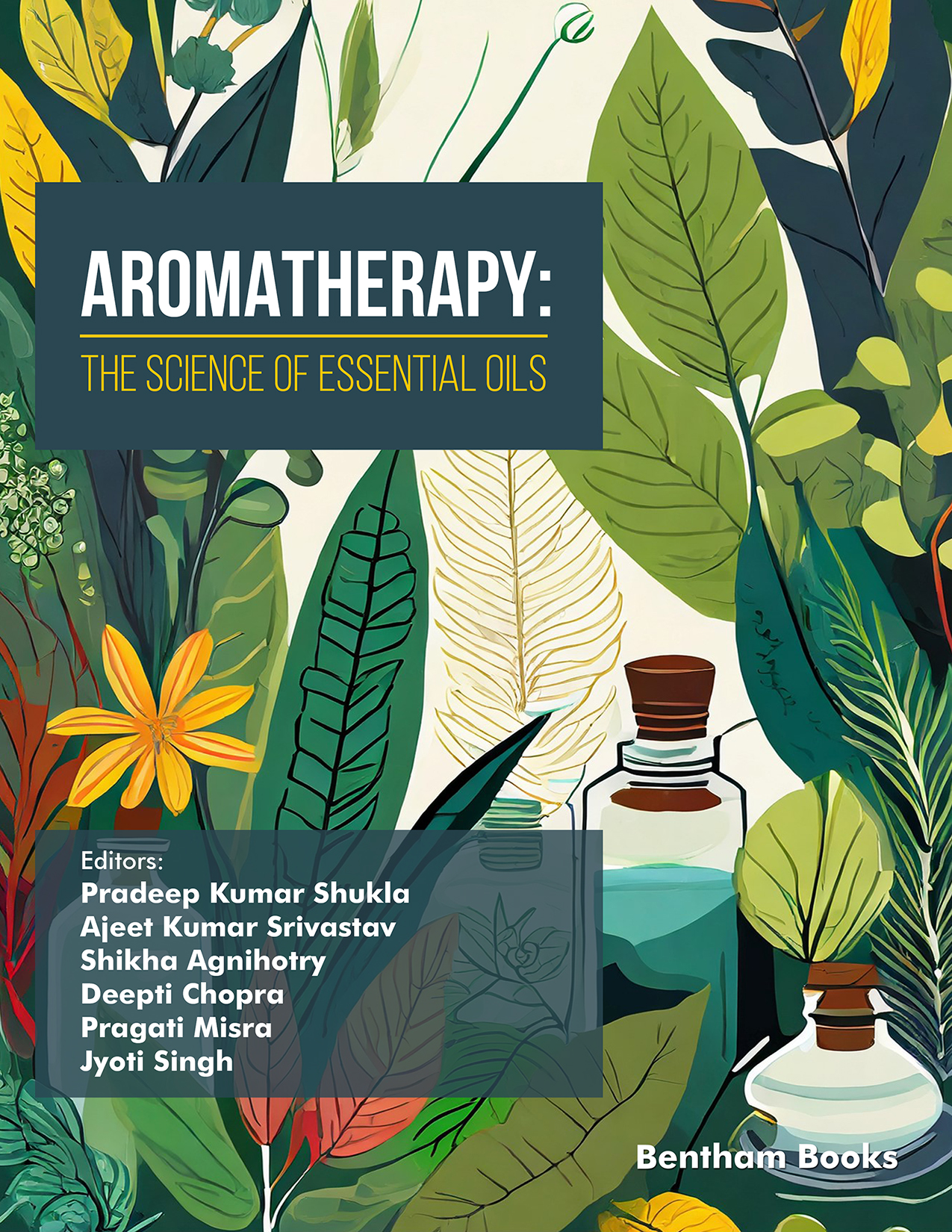One of humanity's greatest legacies is the extensive knowledge about plants, which forms the basis of culture itself. The fascination of ambient pancha-mahabhutas in plant bodies is the first step in the biological process of producing essential oils. Owing to their distillation of “essential” components from “nonessential”, essential oils are the most significant plant wealth. They are frequently referred to as the “plant's soul” or the “quintessence for healing”. Aromatherapy is a form of traditional, alternative, or harmonizing therapy that uses volatile plant metabolites, known as essential oils, and other aromatic plant compounds to change a person's mind, body, and spirit. Essential oils are so-called “essential,” not for their indispensable role in life, but because “essential” is the attribute of “essence”, and these oils comprise the essence of a plant’s fragrance. Aromatherapy encompasses not only the artistic application of essential oils to induce virtuous changes on aesthetic and mystical levels but also the scientific application of essential oils to effect salutary changes in the physical realm. Essential oils have a tremendous impact on the body's and mind's deepest levels.
Nowadays, there is rising attention to the use of alternate and complementary therapies along with core medicine. This empirical discovery suggests that human immune responses may be stimulated, augmented, or somehow refined by persistent exposure to aromatic compounds. Aromatherapy is the practice of using essential oils as the major therapeutic agent to treat several diseases. Essential oils have been used for millennia by humans for their paramount importance in traditional and alternative medicinal approaches. Furthermore, their applications are also documented in Ayurveda, Chinese medicine, and homeopathy. There is a curiosity to unveil/rediscover the possible paradoxes of synthesis, mechanisms, and applications of essential oils and provide validated information on a common platform.
The book
“Aromatherapy: The Science of Essential Oils” shows a broad picture of essential oils-based aromatherapy in several sub-sections, including historical perspective, aromatherapy evolution, essential oils biochemistry and biosynthesis, therapeutic applications, and pharmacological aspects of essential oils, essential oil toxicities, and regulatory aspects. The major highlights of the book pertain to correlation studies on essential oils mediated skin remediation; the use of a combination of different essential oils for aromatherapy; understanding of the molecular mechanism behind aromas and the role of aromatherapy; essential oils characteristics and properties against particular condition; current status and future prospective of aromatherapy. The book effectively presents many perceptions, and replicas, and a treasure of brilliant articles, both detailed overviews and studies, which can broaden our understanding of all aspects of essential oils as limitless molecules meant for numerous applications. The material in this book was gathered from reliable, reputable sources. It provides a great comparison to help grasp the principles of aromatherapy based on essential oils.
The chapters, written by professionals and experts in their corresponding fields, cover a profuse spectacle of topics and provide a groundwork in the natural chemistry of essential oils and their major applications. This comprehensiveness of the book brands it as a ‘one-stop platform’ and devising it as equally valuable for physiochemists, medical professionals, plant scientists, pharma-industrialists, microbiologists, ayurveda experts, biotechnologists, herbal-drug scientists, and physicians. Beyond multidisciplinary, interdisciplinary, and transdisciplinary research that incorporates the viewpoints of several disciplines, integrated, theory- and issue-driven aromatherapy procedures/protocols have vast scope. The intricacy of essential oils is being revealed with continual investigation, and it is becoming more and more clear how important they are to many businesses and how they may be used in healthcare. Future discoveries and creative uses might result from the continued investigation and comprehension of their intricate biological makeup. Furthermore, research and documentation on aromatherapy must eventually be placed within the larger frameworks of protecting biodiversity, managing resources sustainably, and protecting intellectual and biological property rights. This book will additionally accommodate as a wide-ranging outline of traditional and current information on the health effects of aromatherapy, that will be pertinent to the advancing back to nature crusade of today’s world.
This book is intended to satiate the requirements of EO manufacturers, purveyors, and consumers as well as the scientific fraternity, academicians, and legislators who will find the most recent knowledge given by exclusive experts under one cover. I am certain that readers in the field of life sciences would find this book very useful. The authors, editorial team, and publisher deserve congratulations and best compliments for publishing this useful book.
Ir. Jonathan A. Lal
Sam Higginbottom University of Agriculture
Technology and Sciences
Prayagraj, Uttar Pradesh-211007
India

